Steering is one of the many skills you will utilize while driving. Correct steering techniques and hand position will help you control the wheel and there are a few different hand positions you can use while on the road. You should choose the one that is most comfortable for you as well as whether your vehicle is equipped with a steering wheel airbag.
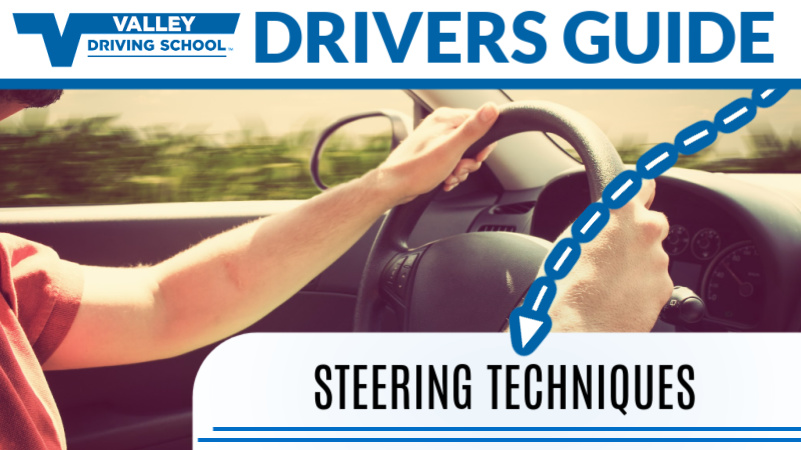
Think about the steering wheel as if it was the face of a clock, and your hands are sitting on each number. Let’s start off with the most commonly talked about position, 10 & 2, and we’ll explore some other options as well!
10 & 2
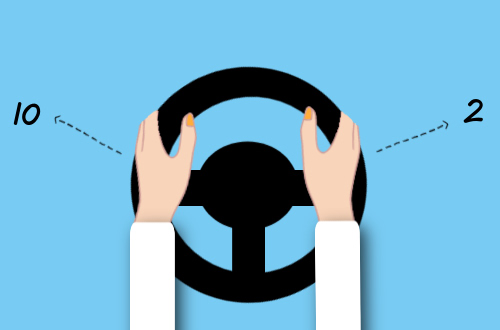
Many drivers have the 10 & 2 hand position as their go-to hand position stance, and for a long time this was the recommended position for having the best control over the steering wheel. This has changed with advances in airbag technology, as it positions the driver’s fingers, hands, and arms in the direct trajectory of the steering wheel’s airbag. Airbags deploy at a rate of around 300 km/hr, which could force your hands and arms to hit your face if deployed. While the 10 & 2 hand position is still allowed by ICBC and offers considerable control, there are some safer alternatives if your vehicle is equipped with a steering wheel airbag!
9 & 3
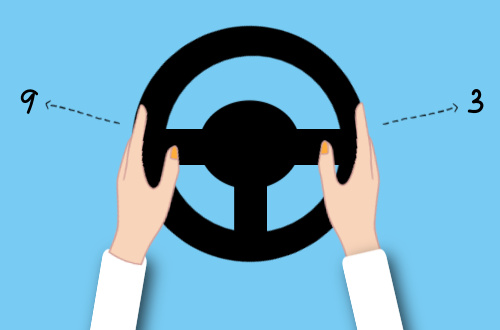
The 9 & 3 hand position is the top recommended stance for holding steering wheels during general driving. By placing each hand on either side of your steering wheel’s centre console, you decrease the danger of airbag injury since your arms are likely to be propelled to the side rather than right back into you when the airbag launches. This hand position still provides significant control over the steering wheel, allowing you to complete maneuvers safely and comfortably.
8 & 4
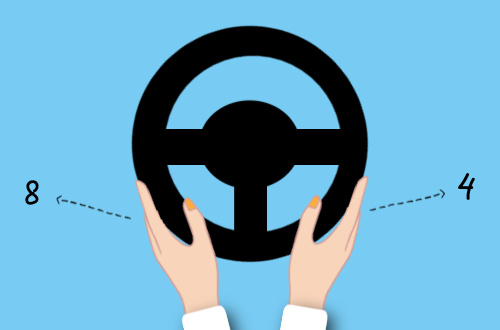
An equally acceptable steering stance is the 8 & 4 position, where the driver's hands are sitting along the lower curve of the steering wheel. Drivers tend to find this stance to be the most comfortable and least fatiguing so it is a go-to for long distance driving on highways and freeways. However, it is important to know that you should still keep your arms and hands alert and active while maintaining this position. This means not letting your arms rest on your lap. This can be an easy trap to fall into, especially on longer drives, but as soon as your arms are resting they no longer offer full control and support of the steering wheel!
Hand Over Hand
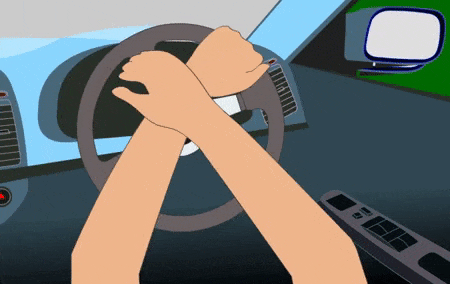
The hand over hand method is a turning technique that can be beneficial in situations that involve both high- and low-speed turning. In this technique, drivers begin to turn the wheel in the direction they want to go, and as the steering wheel turns, your hand is brought over the other to grasp the steering wheel and complete the turn. For example, when turning right, use both hands to start turning the wheel and as your right hand comes down with the steering wheel, you cross your right hand over your left arm to grasp the steering wheel at a different position to continue turning the wheel. Repeat as necessary and resume your preferred hand positioning once the turn is complete!
The Shuffle
The shuffle technique, or push-pull method, is what’s now most commonly used for all turns. This technique is preferred when compared to the hand over hand method because it doesn’t get your arms tangled up in a knot – a common problem for beginners who are learning! In this technique, one side of the steering wheel is pulled down while the other pushes up on the opposite side. The two hands are continually shuffled and return to the starting position. If the airbag is triggered, the risk of damaging your hands and arms is minimal!
Steering Techniques to Avoid

Hooking is when drivers hold the steering wheel by placing their hands through the wheel and gripping it with their palms and forearms facing up. This puts the entire arm at risk of getting stuck or injured should there be a collision that triggers the airbags.
Palming the wheel is another unsafe habit where drivers facilitate a turn by only using the palm of their hand to push the steering wheel in the direction they are turning. This is unsafe because it does not provide enough control and their palm could slide off, cramp, or miss the steering wheel entirely since fingers are not being used to grasp the wheel firmly. The use of either hooking or palming during a road test results in an automatic fail as per ICBC standards.
Try to avoid having just one hand on the steering wheel as two hands provide much more control than just one! Even when driving a standard, one hand does not need to be on the gear shifter at all times. Once a shift has been completed, that hand can be returned to the steering wheel until it is needed for the next shift.
–
Maintaining full control of any vehicle you are driving is done, in large part, with the steering wheel. It is important that you have control of the steering wheel at all times when on the road, especially when you are turning or maneuvering through intersections, so make sure to follow the guidelines above for the safest steering wheel techniques!
